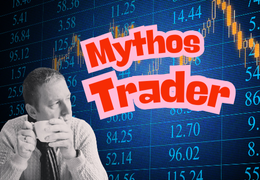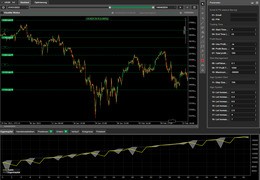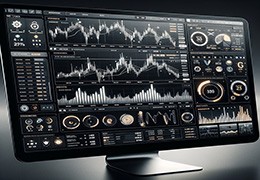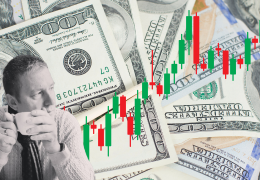Between reality and illusion If you want to know what trading really means—beyond luxury cars, piles of cash, and...
Search in blog
Blog categories
- FAQ – Your guide through the world of finance and technical facilities (2) click
- Daytrading Almanac (27) click
- Press release (23)
- Educational (26) click
- Projects (9)
- Chart analysis (39) click
- Trading bots for cTrader (11)
- AI in trading (5)
- Trading Strategien (11)
- Trading signals and stock market letters (46)
Latest posts

When it comes to traders, social media platforms often create a rather one-sided image: a young face smiling at the...

The TegasFX Instant Funding program sets a new standard for traders seeking quick access to capital without having to...

Backtesting trading strategies is an essential tool for traders who want to validate their methods across historical...

introduction In the world of trading, it can be challenging to balance the intense market activity and the rapid...
Popular posts





Featured posts





Photo gallery
No featured images
Archived posts
Top authors
-
 Christian Lill 70 Posts View posts
Christian Lill 70 Posts View posts -

-

-

-

Strategies for traders and investors in the new financial order Part 3
The impact on the US dollar
With the end of the petrodollar system, the one-sided demand for the US dollar, which was driven by oil trading, will subside. This could lead to a weakening of the US dollar and increase the attractiveness of other currencies such as the yuan or the rupee. Traders should be aware of these changes and adjust their currency positions accordingly. Diversification into other stable currencies could be a sensible strategy to minimize risk.
Traders and investors should closely monitor the foreign exchange market and take advantage of opportunities to profit from currency fluctuations. Building positions in currencies that could benefit from oil trade diversification could be a worthwhile strategy.
Volatility in the markets
Uncertainty about the future of the US dollar could lead to increased volatility in the financial markets. Stocks that are heavily dependent on international trade relations could be particularly affected. Traders should prepare for a period of increased volatility and consider appropriate hedging strategies. The use of options and futures can be one way to protect against unexpected market movements.
Investors should also consider using volatility indices as hedging tools. These indices, such as the VIX, measure the expected volatility of the markets and can serve as indicators of market uncertainty.
Portfolio diversification
One of the most important strategies in times of increased uncertainty is portfolio diversification. Investors should review their portfolios and, if necessary, invest in different asset classes to spread risk. In addition to traditional stocks and bonds, commodities, especially gold, could also be a useful addition. Gold has historically performed well in times of economic uncertainty and could serve as a safe haven.
Diversification should also be done geographically. Investors could invest in different markets around the world to spread risk and benefit from growth opportunities in emerging economies.
The meaning of gold
Given the uncertainty in the global financial system, gold is becoming an increasingly important lifeline. Many investors have already started to increase their gold holdings to hedge against potential currency fluctuations and economic instability. The price of gold could continue to rise in the coming years as demand for the precious metal increases. Investors should therefore consider holding gold as part of their portfolio.
Gold ETFs (Exchange-Traded Funds) could be a convenient way to invest in gold without holding the physical metal. These ETFs offer liquidity and easy trading opportunities and can serve as a hedge against market risks.
Alternative investments
In addition to gold, other alternative investments such as cryptocurrencies, real estate and emerging market bonds could also be interesting options. While cryptocurrencies offer high volatility, they also offer the potential for significant gains. Real estate can serve as an inflation-protected asset, while emerging market bonds may offer higher returns than Western bonds.
However, investors should carefully consider the risks and rewards of alternative investments. Cryptocurrencies can fluctuate widely and are vulnerable to regulatory changes, while real estate investments can be subject to liquidity risks and market fluctuations.
Long-term investment strategies
While short-term volatility can be challenging, investors should also keep an eye on long-term trends. The shift toward a multipolar world order is unlikely to happen overnight, but will develop over years. Long-term investors could benefit from these changes by investing in emerging markets and innovative technologies.
Investments in sustainable and environmentally friendly technologies could also offer attractive long-term returns. The global energy transition and the transition to renewable energy will likely require significant investments in these areas.
Risk management
Risk management is crucial in times of global uncertainty. Investors should regularly review their investment strategies and make adjustments if necessary. Using stop-loss orders, regularly rebalancing the portfolio and holding liquid assets can help minimize risk and limit potential losses.
Diversified investment portfolios and a robust risk management strategy can help investors remain stable and protect their assets during uncertain times.
Conclusion
The end of the petrodollar marks a turning point in the global financial order and brings with it significant challenges for traders and investors. However, with the right strategy and a clear focus on risk management, investors can operate successfully even in times of increased uncertainty. Well-thought-out portfolio diversification, increased use of safe havens such as gold and the willingness to adapt to new market conditions are crucial to remaining stable and successful in the long term.
Leave a comment
Related posts
 Day Trading Almanac Foreword
Day Trading Almanac Foreword
 History of day trading
History of day trading
 Choosing the right trading platform
Choosing the right trading platform
 AI Finance Association Europe: Innovation in finance through weekly bot developments
AI Finance Association Europe: Innovation in finance through weekly bot developments
